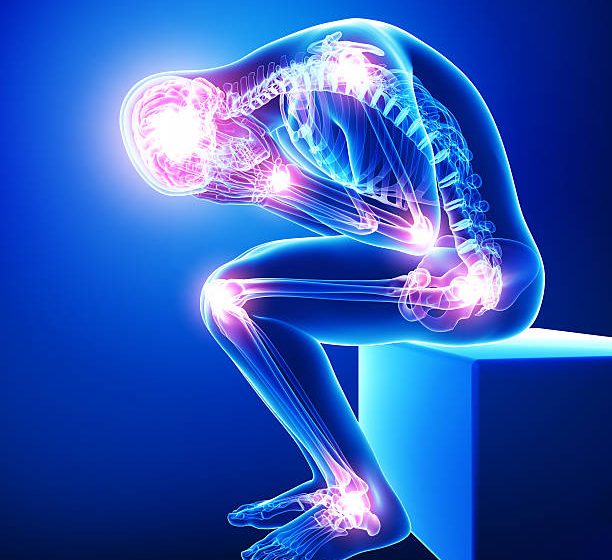Investigating the Mind-Body Connection in Pain Management to Encourage Internal Healing

Introduction:
Every single person on the planet is affected by the complex and unique experience of pain. Emotional or physical, acute or chronic pain can have a profound effect on a person’s quality of life. Traditional approaches to pain management often focus exclusively on treating the physical symptoms, such as administering prescription medications or performing surgeries. However, a growing body of research suggests that the mind and body are intertwined, and that effective pain management may depend on addressing this interaction. In this article, we explore the concept of internal healing while looking at the mind-body connection in pain management.
Understanding the Mind-Body Connection:
The “mindbody connection” refers to the relationship between our thoughts, emotions, and beliefs and our physical well-being. Despite the historical propensity of Western medicine to perceive the mind and body as distinct entities, psychoneuroimmunology has revealed compelling evidence of the mind-body connection. Psychoneuroimmunology is the study of how psychological factors, including stress and emotions, can influence the neurological, endocrine, and immune systems, which in turn can impact physical health.
The central nervous system is one of the primary mechanisms via which the mind-body connection influences pain perception. Since the brain processes pain signals primarily, stress, worry, and mood are some of the things that can either increase or diminish the experience of pain. Long-term stress, for example, can release stress chemicals like cortisol, which can increase a person’s sensitivity to pain. However, deep breathing, mindfulness, and meditation are examples of relaxation techniques that have been shown to put the body into a relaxed state, which reduces pain perception and expedites healing.
The Role Emotions Play in Pain Management:
Emotions have a big impact on how pain is experienced and managed. Negative emotions, such as dread, worry, and depression, can exacerbate pain by raising sensitivity to nociceptive signals and inducing physiological reactions that heighten the perception of pain. The sensation of chronic pain itself can also set off a vicious cycle of suffering and emotional anguish, evoking feelings of helplessness, fury, and frustration.
On the other hand, cultivating good emotions like gratitude, optimism, and compassion can make a big difference in how well one handles pain. Building appreciation has been linked to increased psychological well-being, resilience, and even a reduction in the intensity of chronic pain, according to research. Similarly, adopting an optimistic mindset can support adaptable coping strategies and a positive outlook, which in turn can help individuals manage their pain more effectively.
Mind-Body Methods for Pain Reduction:
Because the mind and body are closely related, more and more medical experts are using mindbody therapies in their pain management protocols. These therapies aim to harness the power of the mind to improve overall health, reduce pain, and promote healing. Among the mindbody methods of pain management that are commonly used are:
1. Meditation and mindfulness:
Meditation helps to focus the mind and develop awareness of the present moment, whereas mindfulness is the practice of paying attention to thoughts, feelings, and bodily sensations without passing judgment. These methods have been shown to enhance pain coping strategies, decrease pain intensity, and enhance overall quality of life in those with chronic pain conditions.
2. Relaxation Techniques:
Progressive muscle relaxation, deep breathing exercises, and guided imagery are a few examples of relaxation techniques that help reduce pain and increase comfort by encouraging relaxation, lowering stress levels, and alleviating muscle tension.
3. Cognitive behavioral therapy (CBT):
The goal of this therapeutic approach is to identify and change maladaptive beliefs, attitudes, and behaviors that underlie the experience of pain and discomfort. Cognitive behavioral therapy (CBT), which addresses negative thought patterns and imparts coping methods, can help people manage their discomfort and improve their overall functioning.
4. Yoga and Tai Chi:
These traditional mind-body practices combine breathing exercises, physical postures, and meditation. Both methods have been shown to improve flexibility, strength, balance, and overall physical functioning while also reducing discomfort and promoting relaxation.
5. Biofeedback:
Through the use of electrical devices, biofeedback enables people to track and control physiological processes such as skin temperature, muscle tension, and heart rate. By learning to adjust these physiological processes, people can reduce discomfort and feel more in control of their health.
The Effectiveness of Mind-Body treatments:
Numerous studies have demonstrated the effectiveness of mind-body treatments in treating a variety of pain conditions, including fibromyalgia, low back pain, migraines, and arthritis. For example, a metaanalysis that was published in JAMA Internal Medicine found that practicing mindfulness meditation significantly improved physical functioning and reduced severe pain in those with chronic pain. Similarly, a thorough analysis of randomized controlled studies discovered that yoga improved the quality of life and reduced pain for people with chronic low back pain.
Furthermore, mindbody therapies offer several advantages over conventional prescription painkillers. Unlike opioids, which may have undesirable side effects and raise the risk of addiction, mindbody therapies are often well-tolerated, secure, and easy to integrate into daily routines. Additionally, these therapies empower individuals to take an active role in their own recovery by promoting self-awareness and teaching self-care practices.
Challenges and Considerations:
Despite the fact that mindbody therapies have promise as an adjunctive pain management approach, there are several problems and variables to take into account. First of all, not every person will benefit from mindbody therapies; rather, the best interventions should be selected based on the preferences, abilities, and cultural background of each individual. Second, in order to integrate mindbody therapies into conventional healthcare settings, it could be required to overcome challenges such gaps in insurance coverage, access limitations, and mistrust from medical personnel.
Furthermore, more extensive research is still needed to fully understand the mechanisms of action and long-term effects of mindbody therapies, even if the body of evidence supporting their efficacy is growing. Moreover, it’s yet unknown which types of pain should benefit from mindbody therapies and to what extent or for how long.
In summary:
Understanding the intimate connection between the mind and body and leveraging it to promote wellness and health are essential elements of internal healing. By addressing the root causes of pain and empowering patients to actively participate in their own healing, mindbody therapies offer a complete approach to pain management. Since mindbody treatments foster awareness, resilience, and self-care abilities, they may prove to be helpful in reducing pain, enhancing quality of life, and promoting overall wellness. As we continue to explore the mindbody connection, millions of people worldwide may benefit from new insights and approaches to pain management.




